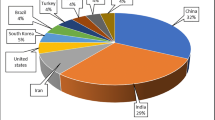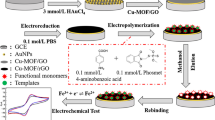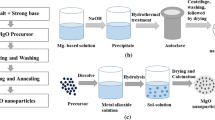Abstract
A type of quartz wool-supported surface dummy molecularly imprinted silica (QW@MIP) was prepared using bisphenol AF as the template molecule for solid-phase extraction of bisphenol A (BPA). The QW@MIP was characterized by FT-IR spectroscopy, scanning electron microscopy, and thermo-gravimetric analysis. The adsorption tests showed that the QW@MIP had high-adsorption ability and a fast binding kinetics for BPA. When used as a solid-phase extraction (SPE) sorbent for BPA, the QW@MIP showed ease of packing SPE cartridge, low flow resistance, high extraction efficiency, high enrichment factor, and good reusability. Moreover, the dummy-imprinting technique used herein can effectively avoid the interference of residual template molecules in sorbent to determination of BPA. A new SPE method was developed using the QW@MIP sorbent, and then coupled with a high-performance liquid chromatography method, it was successfully applied to the detection of BPA spiked in water samples and orange juice and that in a certified sample with recoveries of 96.7–103.1% (RSD = 1.0–2.8%), 96.9–99.9% (RSD = 1.0–2.9%), and 99.2% (RSD = 0.5%), respectively. The limit of detection (S/N = 3) and limit of quantification (S/N = 10) for all samples were 0.05 and 0.17 ng mL−1, respectively. The QW@MIP can be potentially used as a good SPE sorbent for BPA in environmental water samples and beverages.









Similar content being viewed by others
References
Caballero-Casero N, Lunar L, Rubio S (2016) Analytical methods for the determination of mixtures of bisphenols and derivatives in human and environmental exposure sources and biological fluids: a review. Anal Chim Acta 908:22–53
Chen LX, Wang XY, Lu WH, Wu XQ, Li JH (2016) Molecular imprinting: perspectives and applications. Chem Soc Rev 45:2137–2211
Diamanti-Kandarakis E, Bourguignon JP, Giudice LC, Hauser R, Prins GS, Soto AM, Zoeller RT, Gore AC (2009) Endocrine-disrupting chemicals: an endocrine society scientific statement. Endocr Rev 30:293–342
Du Z, Zhang SL, Zhou CY, Liu M, Li GK (2012) Dynamic layer-by-layer self-assembly of multi-walled carbon nanotubes on quartz wool for on-line separation of lysozyme in egg white. Talanta 94:104–110
Griffete N, Li H, Lamouri A, Redeuilh C, Chen K, Dong CZ, Nowak S, Ammar S, Mangeney C (2012) Magnetic nanocrystals coated by molecularly imprinted polymers for the recognition of bisphenol A. J Mater Chem 22:1807–1811
He CY, Long YY, Pan JL, Li KA, Liu F (2007) Application of molecularly imprinted polymers to solid-phase extraction of analytes from real samples. J Biochem Biophys Methods 70:133–150
Hu YL, Pan LL, Zhang KG, Lian HX, Li GK (2013) Novel applications of molecularly-imprinted polymers in sample preparation. Trends Anal Chem 43:37–52
Hu XL, Wu X, Yang FF, Wang Q, He CY, Liu SR (2016) Novel surface dummy molecularly imprinted silica as sorbent for solid-phase extraction of bisphenol A from water samples. Talanta 148:29–36
Jiang XM, Tian W, Zhao CD, Zhang HX, Liu MC (2007) A novel sol-gel-material prepared by a surface imprinting technique for the selective solid-phase extraction of bisphenol A. Talanta 72:119–125
Jiménez-Díaz I, Vela-Soria F, Rodríguez-Gómez R, Zafra-Gómez A, Ballesteros O, Navalón A (2015) Analytical methods for the assessment of endocrine disrupting chemical exposure during human fetal and lactation stages: a review. Anal Chim Acta 892:27–48
Katsaounos CZ, Paleologos EK, Karayannis MI (2006) Flame atomic absorption determination of lead through on-line preconcentration by surfactant mediated glass wool retention. Int J Environ Anal Chem 86:45–52
Lee HL, Kim SH, Ji DB, Kim YJ (2009) A comparative study of Sephadex, glass wool and Percoll separation techniques on sperm quality and IVF results for cryopreserved bovine semen. J Vet Sci 10:249–255
Li HP, Li JH, Li GC, Jen JF (2004) Simultaneous determination of airborne carbamates in workplace by high performance liquid chromatography with fluorescence detection. Talanta 63:547–553
Li J, Zhang XB, Liu YX, Tong HW, Xu YP, Liu SM (2013) Preparation of a hollow porous molecularly imprinted polymer using tetrabromobisphenol A as a dummy template and its application as SPE sorbent for determination of bisphenol A in tap water. Talanta 117:281–287
Lim LW, Okouchi Y, Takeuchi T (2007) On-line preconcentration of trace carcinogenic polycyclic aromatic hydrocarbons (PAHs) in microcolumn liquid chromatography via large volume injection. Talanta 72:1600–1608
Lin ZK, Cheng WJ, Li YY, Liu ZR, Chen XP, Huang CJ (2012) A novel superparamagnetic surface molecularly imprinted nanoparticle adopting dummy template: an efficient solid-phase extraction adsorbent for bisphenol A. Anal Chim Acta 720:71–76
Liu J, Zhu XS (2016) Solid-phase extraction for separation/analysis of bisphenol A in food packaging material. Food Anal Methods 9:605–613
Liu Y, Zhong GX, Liu ZC, Meng MJ, Liu FF, Ni L (2016) Facile synthesis of novel photoresponsive mesoporous molecularly imprinted polymers for photo-regulated selective separation of bisphenol A. Chem Eng J 296:437–446
Locatelli M, Sciascia F, Cifelli R, Malatesta L, Bruni P, Croce F (2016) Analytical methods for the endocrine disruptor compounds determination in environmental water samples. J Chromatogr A 1434:1–18
Nisnevitch M, Kolog-Gulco M, Trombka D, Green BS, Firer MA (2000) Immobilization of antibodies onto glass wool. J Chromatogr B Biomed Sci Appl 738:217–223
Rochester JR (2013) Bisphenol A and human health: a review of the literature. Reprod Toxicol 42:132–155
Sadeghi M, Nematifar Z, Fattahi N, Pirsaheb M, Shamsipur M (2016) Determination of bisphenol A in food and environmental samples using combined solid-phase extraction–dispersive liquid–liquid microextraction with solidification of floating organic drop followed by HPLC. Food Anal Methods 9:1814–1824
Santangeli S, Maradonna F, Gioacchini G, Cobellis G, Piccinetti CC, Valle LD, Carnevali O (2016) BPA-induced deregulation of epigenetic patterns: effects on female zebrafish reproduction. Sci Rep 6:21982. doi:10.1038/srep21982
Sheng N, Wei FD, Zhan W, Cai Z, Du SH, Zhou XM, Li F, Hu Q (2012) Dummy molecularly imprinted polymers as the coating of stir bar for sorptive extraction of bisphenol A in tap water. J Sep Sci 35:707–712
Vella G, Imoberdorf GE, Sclafani A, Cassano AE, Alfano OM, Rizzuti L (2010) Modeling of a TiO2-coated quartz wool packed bed photocatalytic reactor. Appl Catal B Environ 96:399–407
Wei FD, Liu XP, Zhai MJ, Cai Z, Xu GH, Yang J, Du SH, Hu Q (2013) Molecularly imprinted nanosilica solid-phase extraction for bisphenol A in fish samples. Food Anal Methods 6:415–420
Williams KE, Lemieux GA, Hassis ME, Olshen AB, Fisher SJ, Werb Z (2016) Quantitative proteomic analyses of mammary organoids reveals distinct signatures after exposure to environmental chemicals. Proc Natl Acad Sci U S A 113:E1343–E1351
Xiao XH, Yan KL, Xu XF, Li GK (2015) Rapid analysis of ractopamine in pig tissues by dummy-template imprinted solid-phase extraction coupling with surface- enhanced Raman spectroscopy. Talanta 138:40–45
Yang YJ, Yu JL, Yin J, Shao B, Zhang J (2014) Molecularly imprinted solid-phase extraction for selective extraction of bisphenol analogues in beverages and canned food. J Agric Food Chem 62:11130–11137
Yang JJ, Li Y, Wang JC, Sun XL, Cao R, Sun H, Huang CN, Chen JP (2015a) Molecularly imprinted polymer microspheres prepared by Pickering emulsion polymerization for selective solid-phase extraction of eight bisphenols from human urine samples. Anal Chim Acta 872:35–45
Yang JJ, Li Y, Wang JC, Sun XL, Shah SM, Cao R, Chen JP (2015b) Novel sponge-like molecularly imprinted mesoporous silica material for selective isolation of bisphenol A and its analogues from sediment extracts. Anal Chim Acta 853:311–319
Yu D, Hu XL, Wei ST, Wang Q, He CY, Liu SR (2015) Dummy molecularly imprinted mesoporous silica prepared by hybrid imprinting method for solid-phase extraction of bisphenol A. J Chromatogr A 1396:17–24
Zhan W, Wei FD, Xu GH, Cai Z, Du SH, Zhou XM, Li F, Hu Q (2012) Highly selective stir bar coated with dummy molecularly imprinted polymers for trace analysis of bisphenol A in milk. J Sep Sci 35:1036–1043
Zhao WH, Sheng N, Zhu R, Wei FD, Cai Z, Zhai MJ, Du SH, Hu Q (2010) Preparation of dummy template imprinted polymers at surface of silica microparticles for the selective extraction of trace bisphenol A from water samples. J Hazard Mater 179:223–229
Acknowledgements
This work was supported by the National Nature Science Foundation of China (21277106) and the Science and Technology Program of Wuhan (2015060101010034).
Author information
Authors and Affiliations
Corresponding author
Ethics declarations
Funding
Dr. Qiang Wang has received research grant from the National Natural Science Foundation of China. Dr. Chiyang He has research grant from the Science and Technology Program of Wuhan.
Conflict of Interest
Yarong Li declares that she has no conflict of interest. Jincheng Cheng declares that she has no conflict of interest. Pengpeng Lu declares that he has no conflict of interest. Wang Guo declares that he has no conflict of interest. Qiang Wang declares that he has no conflict of interest. Chiyang He declares that he has no conflict of interest.
Ethical Approval
This article does not contain any studies with human participants performed by any of the authors.
Informed Consent
Informed consent was obtained from all individual participants included in the study.
Rights and permissions
About this article
Cite this article
Li, Y., Cheng, J., Lu, P. et al. Quartz-Wool-Supported Surface Dummy Molecularly Imprinted Silica as a Novel Solid-Phase Extraction Sorbent for Determination of Bisphenol A in Water Samples and Orange Juice. Food Anal. Methods 10, 1922–1930 (2017). https://doi.org/10.1007/s12161-016-0765-2
Received:
Accepted:
Published:
Issue Date:
DOI: https://doi.org/10.1007/s12161-016-0765-2




